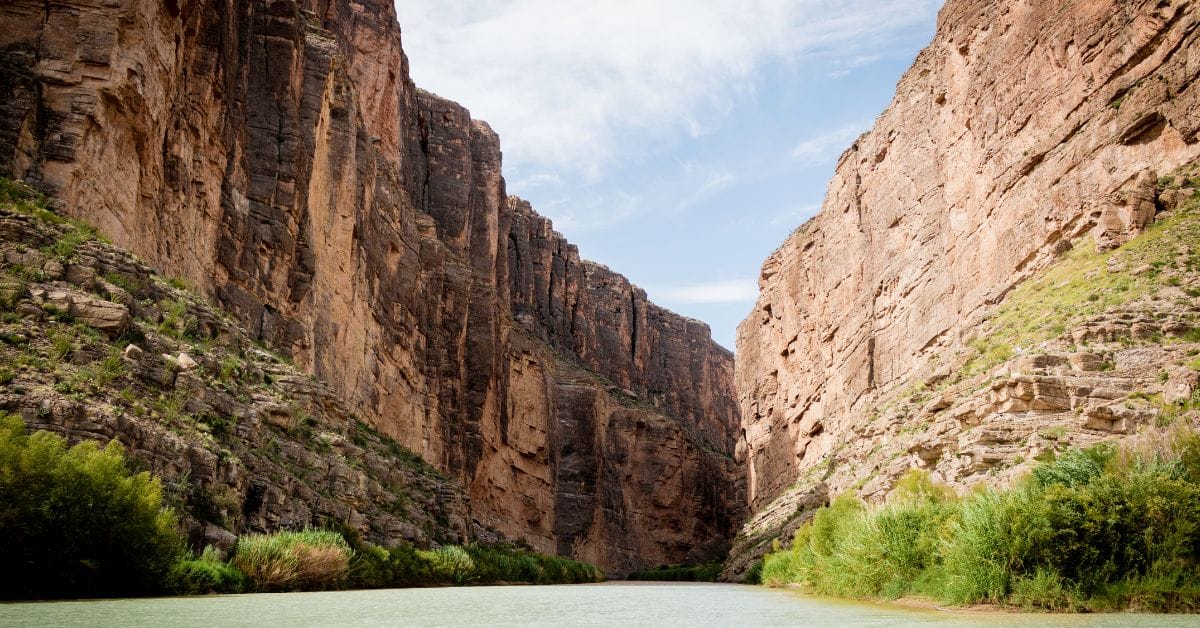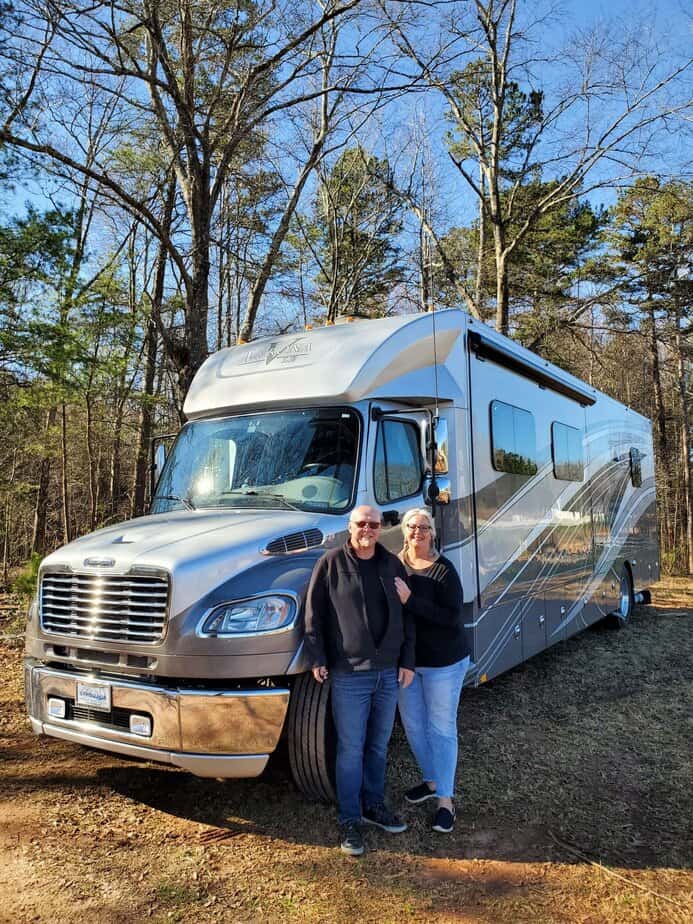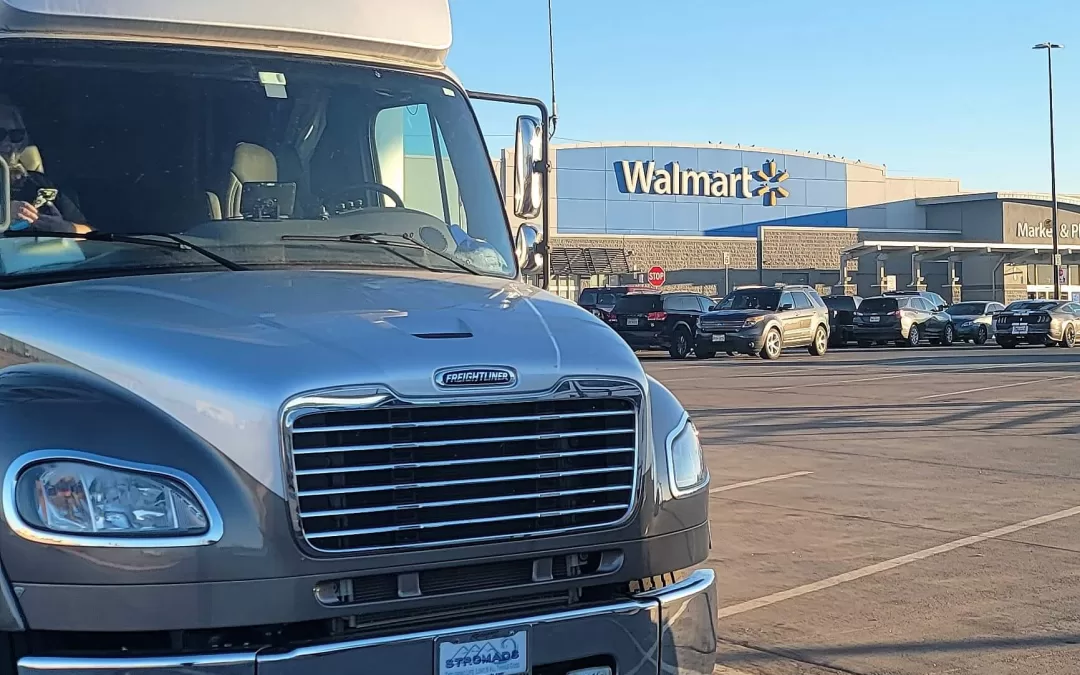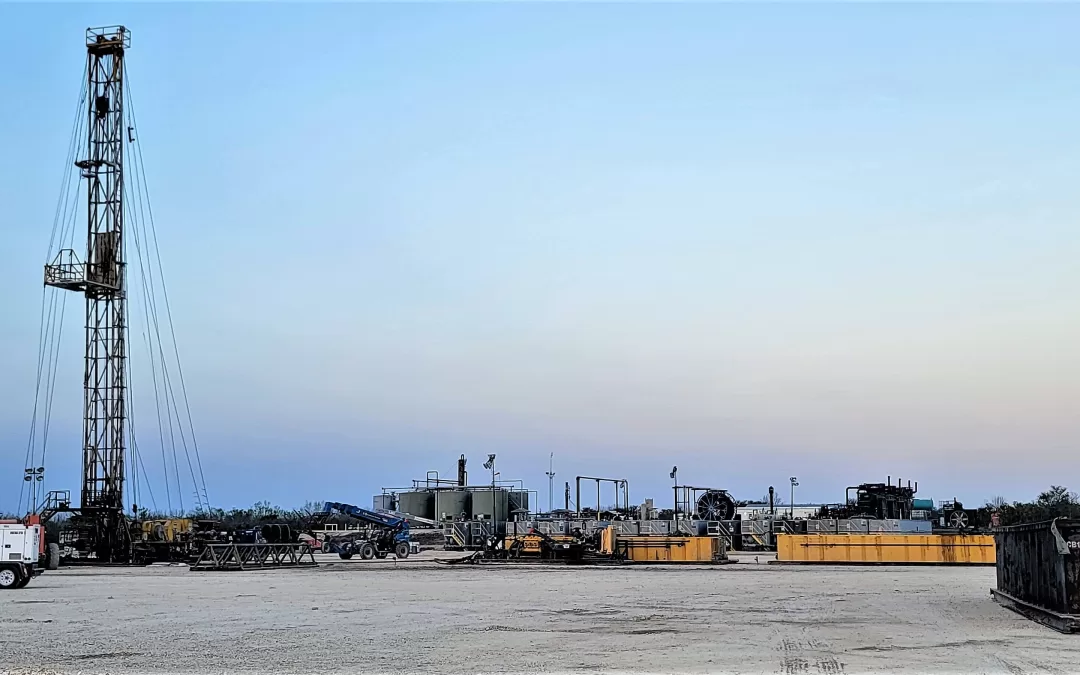Big Bend Itinerary: 1 and 3-Day Options for Every Kind of Explorer
Updated: April 2, 2025
If you’re looking for a Big Bend itinerary that captures the highlights and the hidden gems, you’re in the right place. Whether you’re squeezing in a day trip or stretching your legs over a long weekend, I’ve put together two flexible options—a 1-day and a 3-day itinerary—to help you make the most of your time in this one-of-a-kind park.
Big Bend is the kind of place that grabs hold of you in quiet, unexpected ways. There’s a hush that settles in—the kind that makes you breathe a little deeper, move a little slower, and look a little longer. Out here, surrounded by rugged mountains, dramatic canyons, and wide-open desert, the splendid isolation isn’t a drawback—it’s the gift.
I’ve only been to Big Bend once, but its impact was immediate. As full-time nomads since 2016, Robb and I have explored over 35 National Parks across the U.S., and Big Bend ranks high on our list for its raw beauty and solitude. This guide blends firsthand experience with practical advice to help you feel confident navigating the park—even if it’s your first visit.
We’re also offering a FREE downloadable 1 and 3-day Big Bend itinerary that you can take on the road. Grab it below.
Your Perfect Big Bend Itinerary Starts Here
We’re so glad you’re considering Big Bend for your next adventure. Whether you’ve got one day or three, these itineraries are built from our own travels to help you explore with confidence—no stress, no guesswork.
Want even more ideas and insider tips? Don’t miss our blog post: 9+ Epic Things to Do in Big Bend National Park (2025 Guide). It’s packed with the extras we couldn’t fit here.
Before we dive in, think about how you want to experience Big Bend.
Chasing starry skies and overlooks in a single day? Or slowing down to soak it all in?
Pick the plan that fits your style—and get ready for some jaw-dropping views.
.
Your 1-Day Big Bend Itinerary: Dramatic Desert, Start to Finish
- Time: All day (5–8 hours total, including drive time)
Only have one day in Big Bend? Then you need a well-thought-out plan—this park is massive, remote, and full of jaw-dropping sights that are far apart.
This itinerary is packed with unforgettable views, a little history, and a taste of the rugged magic that makes Big Bend so special. It will save hours of guesswork and help you hit the highlights without missing the magic.
What to Expect Today:
A scenic drive through the park’s most photogenic route, a short canyon hike, a visit to a historic district, and a sunset you won’t forget.
You’ll cover a lot of ground, and with a smart game plan, you’ll avoid backtracking while experiencing the park’s most iconic highlights. Best of all, you can experience Big Bend National Park in one day without feeling rushed.
Morning
Panther Junction Visitor Center
30 minutes
Stop in for maps, restrooms, and to chat with rangers about road conditions and trail status.
Ross Maxwell Scenic Drive
1.5 to 2 hours (with scenic stops).
This iconic road offers endless desert views and several pull-offs. Don’t miss:
- Tuff Canyon Overlook – 15 minutes: A quick stop to see a deep, narrow canyon carved by water.
- Sotol Vista Overlook – 15–30 minutes: One of the best views in the park, especially in the morning light.
- Santa Elena Canyon – 1 to 1.5 hours: If water levels are low, take the full trail; if not, walk to the base for dramatic canyon views.
Midday
Picnic at Santa Elena Canyon
30–45 minutes
Shaded tables, restrooms, and epic scenery make this the perfect lunch stop.
Castolon Historic District
20–30 minutes
Optional short visit to learn a bit about the region’s human history, though services are limited due to past fire damage.
Afternoon
Drive to Chisos Basin
45 minutes to 1 hour.
This winding climb offers a change of scenery as you head into the mountains.
Evening
Window View Trail
30 minutes
Easy and rewarding—especially at sunset.
Chisos Basin Overlook
20–30 minutes
Bring your camera and layers—it gets cooler up here.
Pro Tip: Stay late for stargazing—Big Bend is one of the best dark-sky parks in the U.S.
Alternative Afternoon & Dinner Option:
If Santa Elena Canyon is inaccessible due to high water, you can still walk to the canyon entrance and take in the breathtaking views—there is no need to cross the water to appreciate the scenery.
Skip Castolon (there have been limited services since a fire) and consider heading to Chisos Basin a bit earlier for sunset.
After that, make your way to Terlingua for a different kind of evening: watch the sun set over the historic Terlingua Cemetery, then enjoy dinner at the Starlight Theatre Restaurant & Saloon. It’s a local favorite with great food, live music, and a colorful Wild West vibe.
Here’s why Terlingua Ghost Town shouldn’t be missed!
3-Day Big Bend Itinerary
If you have three days, you’ll get the full Big Bend experience—mountains, canyons, rivers, and maybe even a soak in the hot springs. This itinerary gives you time to slow down, explore, and fall in love with the peaceful isolation that makes this place so memorable.
What to Expect Over Three Days
A little bit of everything—epic overlooks, mountain trails, a soak in natural hot springs, and even a chance to float the Rio Grande. Each day builds on the last to give you a well-rounded, immersive experience of Big Bend.
Day 1:
Welcome to the Desert
Time: All day (5–7 hours, with scenic drive and short hikes)
What to Expect Today: Classic desert views, dramatic canyons, and a scenic drive that gives you a true sense of the park’s vastness and rugged beauty.
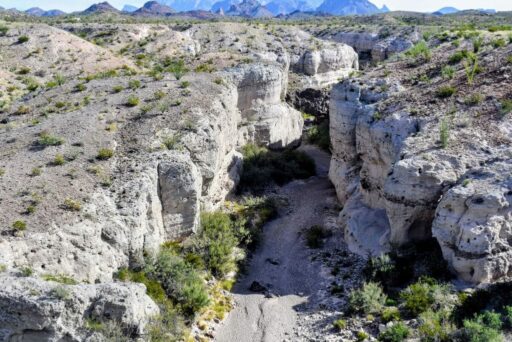
Morning
Panther Junction Visitor Center
30 minutes
Stop in for maps, restrooms, and to chat with rangers about road conditions and trail status.
Ross Maxwell Scenic Drive
1.5 to 2 hours (with scenic stops)
This iconic road offers endless desert views and several pull-offs. Don’t miss:
- Tuff Canyon Overlook – 15 minutes: A quick stop to see a deep, narrow canyon carved by water.
- Sotol Vista Overlook – 15–30 minutes: One of the best views in the park, especially in the morning light.
- Santa Elena Canyon – 1 to 1.5 hours: If water levels are low, take the full trail; if not, walk to the base for dramatic canyon views.
Midday
Picnic at Santa Elena Canyon
30–45 minutes
Shaded tables, restrooms, and epic scenery make this the perfect lunch stop.
Castolon Historic District
20–30 minutes.
Optional short visit to learn a bit about the region’s human history, though services are limited due to past fire damage.
Afternoon
Drive to Chisos Basin
45 minutes to 1 hour.
Enjoy a scenic drive to the Chisos Basin. This winding climb offers a change of scenery as you head into the mountains.
Evening
Window View Trail
30 minutes
Easy and rewarding—especially at sunset.
Chisos Basin Overlook
20–30 minutes.
Bring your camera and layers—it gets cooler up here.
Day 2:
Mountains and Hot Springs
- Time: Flexible (4–6 hours depending on pace and stops)
What to Expect Today:
A mix of high-elevation hiking and riverside relaxation. You’ll start with a mountain trail in the cool morning and end the day soaking in a natural hot spring beside the Rio Grande.

Morning
Pick One: Lost Mine or Window Trail
Both trails are stunning and worth the effort, but unless you’re an avid hiker, we recommend choosing one to fully enjoy without feeling rushed.
These are two of the most popular hikes in the park, so expect crowds—especially in the morning and late afternoon.
Lost Mine Trail
2 to 3 hours | 4.8 miles round trip
A favorite in Big Bend, this steady climb offers sweeping mountain views almost the whole way. If you’re short on time (or energy), aim for the overlook at the 1-mile mark—it’s a popular turnaround point with stunning views.
Window Trail
1.5 to 2.5 hours | 5.6 miles round trip
This scenic trail starts downhill from the Chisos Basin and leads through a rugged canyon to a dramatic “window” view overlooking the desert. The return trip is a climb—pace yourself and bring water.
Midday
Lunch at Chisos Mountain Lodge
1 hour
Sit-down dining with a view—or enjoy your own packed lunch at nearby picnic tables.
Afternoon
Hot Springs Historic Trail
45 minutes to 2 hours
This short, flat trail leads to the ruins of an old bathhouse and a 105°F spring right beside the Rio Grande. Just a few steps from the parking area, it’s an easy walk with a big payoff. Keep an eye out for petroglyphs near the trailhead.
If you’re not taking a dip, plan on about 45 minutes to explore. If you want to soak and linger, give yourself up to 2 hours to enjoy the springs and surrounding scenery.
Optional: Rio Grande Village Nature Trail
30–45 minutes
This easy loop offers views of the wetlands, wildlife, and distant Sierra del Carmen mountains.
Evening
Stick around for some stargazing. The Hot Springs area offers dark skies and wide horizons—perfect for catching the Milky Way.
Day 3:
River Adventures and Off-the-Beaten-Path
Time: 5–6 hours, depending on your float trip or Boquillas visit
What to Expect Today:
Water, border culture, and off-the-grid beauty. Whether you choose to paddle the Rio Grande or explore Boquillas, today’s all about connecting with the land—and maybe a new country.
Morning
Rio Grande Float Trip
2.5 to 3 hours (half-day trip)
Book ahead with a local outfitter. A calm paddle through desert canyons and remote scenery.
Midday
Boquillas Crossing \+ Boquillas, Mexico (Optional)
2 to 3 hours
If you have your passport, take the quick ferry across the river and explore the friendly village. Grab tacos and a cerveza, or shop for local crafts.
Boquillas Canyon Trail (alternative to crossing into Mexico):
1 hour
Short trail with canyon acoustics and great river views.
Afternoon
Lunch near Rio Grande Village
30–45 minutes
Enjoy the scenic drive back toward the Maverick Entrance and Terligua. 60-90 minutes
Evening
Visit Terlingua Ghost Town.
1-2 hours.
Take a walking tour of Terlingua, a once-thriving mining town. Visit the restored church, mine shaft, and Terlingua Trading Post. Before you leave, pay tribute to those who have passed at the Famous Terligua Cemetery.
Terlingua Ghost Town is fascinating and should be included on any Big Bend Itinerary.
Alternative Option:
Big Bend State Ranch
Would you prefer to stay on the U.S. side or skip the hiking and paddling altogether? Take a drive into Big Bend Ranch State Park via FM 170.
This scenic route—known as the River Road—is one of the most breathtaking drives in Texas. Stop at Closed Canyon Trail or Hoodoos Trail for easy walks with big views and far fewer crowds.
Looking for even more ideas to customize your trip? Head over to our full list of things to do in Big Bend to mix and match activities based on your style.
Where to Stay Near
Big Bend National Park
Whether you want to wake up inside the park or unwind in a quirky desert town nearby, Big Bend has options. Here’s a look at staying inside the park vs. outside the park, with a quick pro/con breakdown to help you choose what fits your travel style.
Staying Inside Big Bend National Park
- Wake up surrounded by nature
- Easy access to popular trails and overlooks
- Incredible stargazing
Cons:
- Limited lodging options
- No cell service or Wi-Fi
- Books up fast, especially Chisos Lodge
- Chisos Mountains Lodge – The only hotel inside the park. Rooms and cottages offer incredible views of the Chisos Basin. Book early—it fills up months in advance.
- Chisos Basin Campground – Tent and small RV sites with mountain views and direct trail access.
- Rio Grande Village Campground – Great for river access, picnic areas, and larger RVs.
- Cottonwood Campground – Quiet, no-generator zone near Santa Elena Canyon. Basic, peaceful, and less crowded.
Staying Outside the Park
Booking Tips:
- Book early, especially in spring and fall. These are peak seasons, and lodging fills up fast.
- Check cancellation policies. Some places are non-refundable or have strict policies due to their remote location.
- Confirm amenities. Not all places have Wi-Fi, and some campgrounds are very primitive.
- Plan drive times. If you’re staying outside the park, know that some towns are an hour or more from popular trailheads and points of interest.
Pros:
- More variety and availability
- Access to restaurants, shops, and Wi-Fi
- Unique lodging experiences (glamping, ghost towns, ranch stays)
Cons:
- Requires more daily driving to get into the park
- Not quite as remote or peaceful
Terlingua
- A funky, artsy ghost town with a surprising amount of charm.
- Great for food, music, and sunset views over the desert.
- Terlingua Ranch Lodge – Cabins, pool, restaurant, and wide-open skies
- Camp Elana – Luxury tents with panoramic views and stargazing
Lajitas
- A quiet resort town with upscale lodging
- Lajitas Golf Resort:On-site golf course, restaurant, and bar.
- Maverick Ranch RV Park – Full hookups, access to resort amenities
Marathon
- Quaint, creative vibe about an hour from the park’s entrance.
- Good choice if coming in from the east.
Alpine
- The biggest nearby town with more dining, groceries, and services
- Better for those needing a hotel + essentials before/after the park.
- Hampton Inn: Breakfast included, indoor pool
- The Southwest Shipping Container: Rooftop patio, impressive view
Rent an RV
for Your Big Bend Adventure!
Want to explore Big Bend at your own pace? Renting a campervan or RV can make this trip a full-on road adventure.
- Camp right inside the park
- Save on hotel stays
- Perfect for off-the-grid travel with amazing stargazing
What to Know Before You Go
- Gas up before entering the park. Fuel is limited and more expensive once you’re inside.
- Cell service is spotty to nonexistent. Download your maps and itinerary before arriving.
- The park entry fee is $30 per vehicle. If you visit other national parks, consider getting an America the Beautiful Pass.
- Most trails are restricted to pets. If you’re traveling with your pup, check pet-friendly areas ahead of time.
- Pack plenty of water and snacks. There are limited food options inside the park, and hydration is key in the desert.
- Always check trail and weather conditions at a visitor center or on the NPS website before setting out.
Best Time to Visit
Big Bend National Park
Big Bend is open year-round, but certain times of year offer a better experience depending on your travel style.
🌸 Spring (March–April)
Why Go: Wildflowers in bloom, pleasant temps, great for hiking.
Heads Up: Most popular time—book early to lock in lodging or campsites.
🍂 Fall (October–November)
Why Go: Cooler temperatures return, fewer crowds, crisp desert air.
Best For: Hikers, campers, and photography lovers.
☀️ Summer (June–September)
Why Go: Solitude—you’ll have parts of the park nearly to yourself.
Heads Up: Extremely hot midday temps; plan early hikes and bring extra water.
❄️ Winter (December–February)
Why Go: Cooler days and cold nights, snow-dusted peaks are possible.
Best For: Stargazing, scenic drives, and travelers avoiding crowds.
Safety Tips for Visiting Big Bend
Big Bend’s wild beauty is unforgettable—but it comes with real risks. Here are a few key tips to help you stay safe and smart during your visit:
💧 Hydration/Dehydration is the #1 danger in Big Bend. Always carry more water than you think you’ll need—at least 1 liter per hour when hiking. Heatstroke can sneak up fast in the desert.
🐻Wildlife Awareness In the Chisos Basin, it’s not uncommon to spot bears or mountain lions—especially during mesquite bean season. Javelinas, snakes, scorpions, and spiders also make their home here. Stay alert, give animals space, and never leave food out.
🥾 Footwear Matters: Flip-flops and rocky trails do not mix. Wear sturdy hiking shoes or boots to protect your feet (and ankles) from sharp rocks, cactus spines, and hidden critters.
🚫 Don’t Buy Trail Souvenirs. You may see handmade items for sale along park trails. These are often placed illegally by vendors crossing from Mexico. Buying them encourages illegal activity. Instead, support Boquillas or official park stores.
🚙 Unpaved Roads Are No Joke. If a road says “high clearance required,” believe it. Many backroads are rugged, remote, and can wreck a standard vehicle. With no cell service, breakdowns mean walking for help. Stick to maintained roads unless you’re well-equipped.
What to Pack
Big Bend is remote, wild, and rugged—your packing list can make or break your visit. Here’s what we recommend bringing for comfort, safety, and a good time:
- Refillable water bottles or a hydration pack – You’ll need more water than you think. Aim for at least 1 gallon per person per day.
- Layered clothing – Desert temps swing wildly from chilly mornings to scorching afternoons.
- Wide-brim hat & polarized sunglasses – Essential for sun protection.
- Hiking boots or sturdy shoes – Trails can be rocky, uneven, and dusty.
- Trail snacks – Keep energy up during long hikes or scenic drives.
- Paper park map or downloaded GPS maps – Cell service is unreliable in most areas.
- Flashlight or headlamp – Great for stargazing or navigating campgrounds at night.
Optional but Helpful:
- Binoculars – Big Bend is fantastic for birding and wildlife spotting.
- Cooling towel or neck gaiter – Especially helpful on hot days.
- Portable battery or solar charger – Outlets are scarce.
- Passport – Required if you plan to cross into Boquillas, Mexico.
Let’s Stay Connected
If you enjoyed this guide, you’ll love being part of our road trip-loving community. We share helpful tips, destination ideas, and behind-the-scenes stories from life on the road.
📬 Join our mailing list here! We’d love to have you along for the ride.
Big Bend Feels Like Nowhere Else. Big Bend is one of our all-time favorite national parks—and it’s not just the views. There’s something about the wide-open desert silence, the endless sky, and that deep stillness that gets under your skin. That splendid isolation? That’s the magic.
Whether you’ve got one day or three, this park delivers. And with the right plan, it’s 100% doable—no signal needed.
Our easy-to-follow guides help you make the most of your time, whether you’re hiking, soaking, stargazing, or just cruising with the windows down.
Need Help Planning Your Next Adventure?
I’m not just a national park fan but I’m an itinerary specialist. If you’re planning a multi-park road trip, mapping out a scenic route, or just need help figuring out what’s worth your time, I can help.
➡️ Learn more about custom itinerary planning here.
Big Bend has a way of staying with you no matter how long you stay.
We hope our itineraries help you soak up every moment—and when you’re ready to plan your next adventure, we’ll be right here, ready to hit the road with you.
Travel Safe and Adventure Often,
Maureen and Robb

